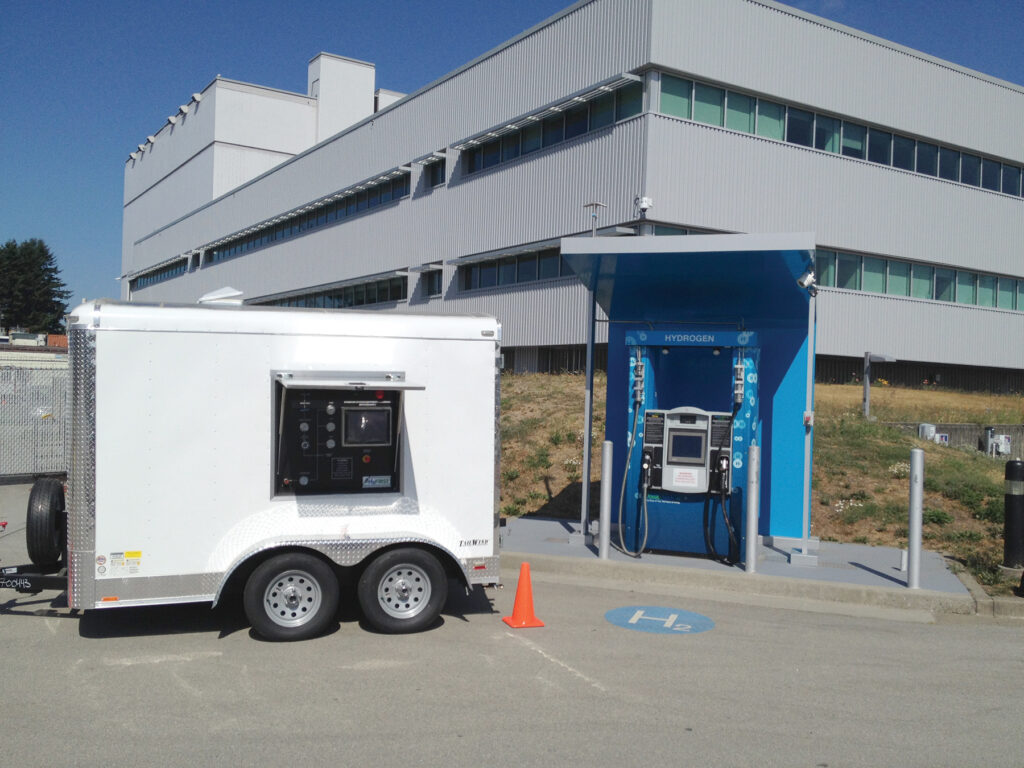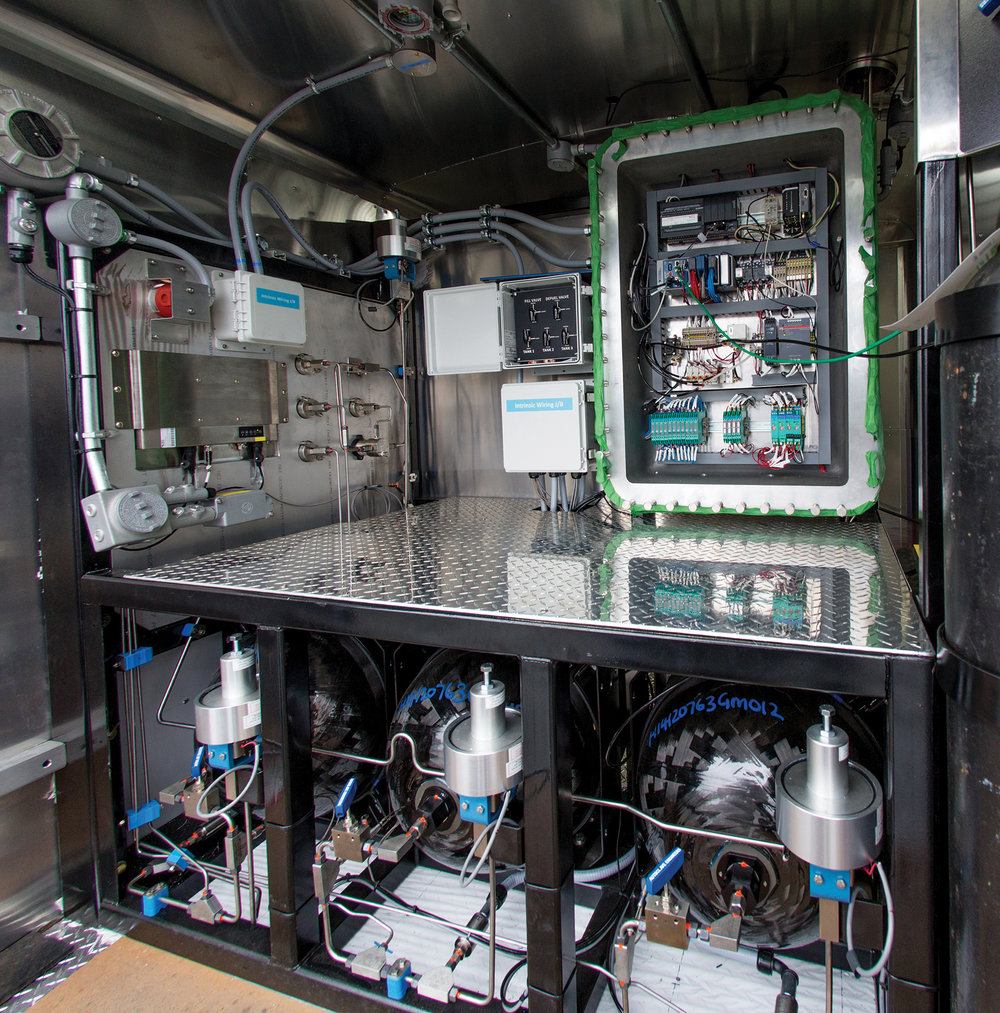
In June 2016, the Hydrogen Station Equipment Performance (HyStEP) project and the US Department of Energy’s (DOE’s) Hydrogen Fueling Infrastructure Research and Station Technology (H2FIRST) team received the Hydrogen and Fuel Cells Program Award at the DOE’s Annual Merit Award Review for outstanding contributions to the widespread commercialization of hydrogen infrastructure.
The HyStEP testing device—the first of its kind in North America—ensures public hydrogen refueling stations meet industry standards and significantly accelerates station commissioning. The device was designed and built by Powertech Labs for Sandia National Laboratories (SNL) and the National Renewable Energy Laboratory (NREL) and funded by the U.S. Department of Energy’s Fuel Cell Technology Office as part of the H2FIRST project.

The HyStEP device is a mobile system built into a trailer and capable of simulating a range of fuel cell electric vehicles (FCEVs). The on-board fuel system includes three Type IV 70 MPa tanks, with the capacity for storing a total of 9 kg of hydrogen, and monitors various pressures, temperatures, and communications data. The device is able to perform key tests defined in CSA HGV 4.3, including communication, non-communication and fault detection tests at 35 and 70 MPa in accordance with the hydrogen fueling protocol SAE J2601.
The HyStEP device allows hydrogen stations to be validated in as little as one week and eliminates the need to use actual FCEVs from different manufacturers to perform a series of validation tests on each hydrogen station, a process that used to take several months. “This test device will help speed up and streamline how we validate retail stations to meet customer demands for high-performance fueling. This is essential to a successful market, as fuel cell vehicles are already being shipped to California and we expect many new customers using hydrogen stations in 2016,” says Catherine Dunwoody, Chief of the Fuel Cell Program at the California Air Resources Board.
California’s South Coast Air Quality Management District carried out tests on more than a dozen complete tank fills with various combinations of the three HyStEP tanks. These tests included comparisons to two Toyota test vehicles and two Honda test vehicles as well as tests for fault detection, communication, and fueling protocol compliance.
In the future, the device could be used in other North American areas as they develop hydrogen fueling networks.
The Hydrogen Infrastructure and Gas Systems Testing Departments of Powertech Labs worked hand in hand to develop the HyStEP device. The Infrastructure Department—a leader in the design and construction of hydrogen fueling stations—has pioneered the design of turnkey, containerized hydrogen fueling station packages and has designed and built specialized systems such as the HyStEP device. For more than 30 years, the Testing Department has provided independent testing services for high-pressure components and systems used in alternate fuel vehicles and fueling infrastructure.